by Sedgwick Clark
I’ve been promising to run photos from our African vacation in this space almost since we returned two months ago. The lone dissenter (“You’re not really going to post photos from your Safari on Musical America.com!! Oy.”) was far outvoted. Only yesterday I ran into a friend who had seen photos posted in a decidedly more timely fashion on our fellow traveler Peter Clark’s Facebook page, and she expressed interest in seeing more. It was difficult to choose from all we took, and I may even have more next week.
The trip was planned by ROAR AFRICA, which we all agreed thoroughly lived up to advance praise. We flew to Johannesburg but after a four-hour layover continued to Cape Town rather than face the former’s notorious crime level. Both of the cities’ airports were strikingly up-to-date and clean, however. Once in Cape Town, we were met by ROAR AFRICA guide Andy Ward, a retired geography teacher, who had the answers for all of our questions and made us feel completely safe and at ease.
Exploring the wine lands and partaking in wine, goat cheese, and chocolate (!) tastings was a relaxed way to overcome 20-some hours of travel. We also visited the Spier Wine Estate, which houses a bird sanctuary and a Cheetah Outreach Program where over 20 of these beautiful, endangered cats live.
We also visited the Hout Bay Music Project, which I wrote about on May 24, while still in Africa. We took so many photos that I’ll put a few of them together in a future week of their own.
The first three photos cover our time in Cape Town before flying east to Kruger National Park, where more colorful beasts roam. All photos were taken by yours truly or Peggy Kane unless otherwise noted.
Many thanks to Stephanie Challener for her assistance in posting these photos.
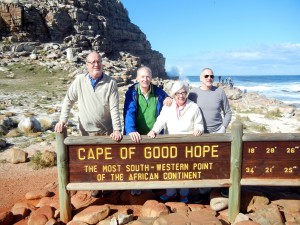
(left to right) The intrepid travelers: Peter Clark, Sedge, Peggy Kane, and Jonathan Rosenbloom at the Cape of Good Hope.
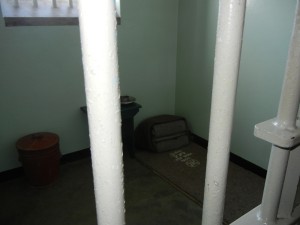
Nelson Mandela’s prison cell for 18 years on Robben Island. The Dutch settled the Cape in the mid-1600s and established the island primarily as a prison. Since 1997 it has been a living museum and a focal point of South African heritage, with tours given by former prison inmates.
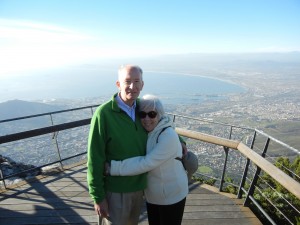
Sedge and Peggy on 3,000-foot Table Mountain with Cape Town in background to the west. Possessed of an unfortunate urge to jump from such heights, I dared venture no further out onto this overlook’s precipice, to Peggy’s amusement. Many young visitors would lean over the railing, presumably to enjoy the precipitous drop, but compelling me to head for center ground. On our 3,500-foot descent in the cable car, to avoid the 360-degree views afforded by the car’s revolving floor, I kept my cookies down by engaging our guide Andy in an eyes’-locked discussion about the upcoming American presidential election.
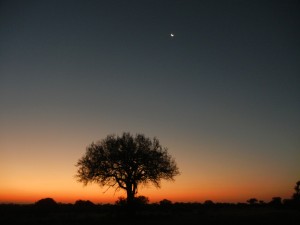
Safari at dawn with tree and crescent moon. Bush safaris in the Tinga and Lion Sands Game Preserves were from 6-9:00 a.m. and 4-7:00 p.m., returning to camp for breakfast and for dinner, respectively. In between, we could watch the elephants cavort in the Sabie River or take a nap.
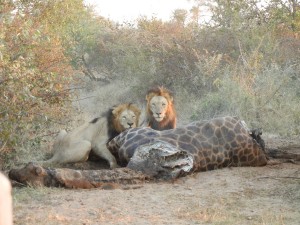
It’s a matter of pride for the safari rangers and trackers to find the Big 5 (lion, leopard, elephant, rhino, and buffalo), as well as hippo and giraffe. A tip from a fellow ranger led us to this scene. The giraffe had been killed by different lions three days before, and these lions (pictured) had ventured out of their own territory from a neighboring park across the Sabie. Before we approached the kill, our ranger stopped the Land Rover and plucked fever bush leaves for each of us to smell. We were very grateful.
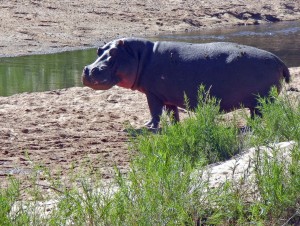
A hippo close-up on a walking tour. Unlike when we were safely seated in the Land Rover, our ranger and tracker each carried a rifle. We were warned that if he should turn on us and charge, the worst thing we could do would be to run! Fortunately he lumbered off into the river.
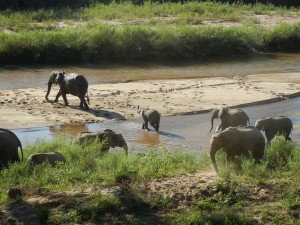
Of the Big 5, elephants are the most prolific. We have photos of them everywhere, crossing highways, jamming traffic as they lumber down dirt safari roads, knocking down trees to eat their roots, crossing the Sabie River.
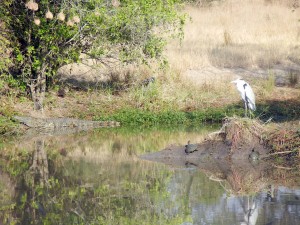
A crocodile lies in wait beneath weaver bird nests, while two terrapins clamber out of the water and a white heron keeps watch.
Despite reassurance that this family of grazing rhinos was allowing us into its territory, being just 20 feet from this most prehistoric-looking of living animals generated a palpable sense of awe and danger.
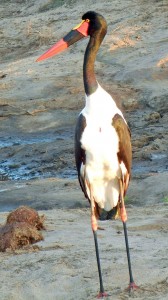
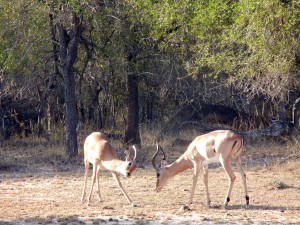
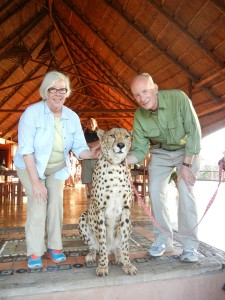
Can Newspapers Charge To Quote Reviews??
Wednesday, August 8th, 2012By Brian Taylor Goldstein
Dear Law & Disorder:
I recently came across the website of an artist management agency in Europe where they had posted the following: “The press review is temporarily not available. German newspapers Frankfurter Allgemeine Zeitung and Süddeutsche Zeitung recently started to pursue institutions and artists using texts (press reviews, interviews, commentaries etc.) published by those newspapers on their websites or in any other commercial context without having paid for them. We have been advised to remove all press quotations from our website as the same phenomenon seems to happen in other countries like Switzerland and Austria.” Is this a copyright trend that will spread to other European countries and the USA? Will agents, and artists have to start paying for the use of (press reviews, interviews, commentaries) used to promote an artists career? Also, if an American agency has press reviews, interviews, commentaries from Europeans newspapers on their websites, such as from the Frankfurter Allgemeine Zeitung and Süddeutsche Zeitung, will these agencies be liable for payment of the use for this information, as well, as it is being used in a commercial context? (Thank you for your column on Musical America, and I also thank Ms. Challener for her leadership in including such information in the weekly email Musical America updates.)
Newspapers and magazines have always owned the exclusive rights to the articles, reviews, editorials, and interviews they publish. Just like you can’t make copies of sheet music, CDs, books, and other copyrighted materials, you cannot make copies of articles and reviews and re-post them without the owner’s permission. Even if you are not “re-selling” an article or review, anything that is used to promote, advertise, or sell a product or service (ie: an artist!) is a “commercial” use.” While “quoting” or “excerpting” a positive review is most often considered a limited “fair use”, making copies of the entire article or review is not. While it should go without saying, you also cannot “edit” or revise articles and reviews in an effort to make a bad review sound more positive. (That’s not only copyright infringement, but violates a number of other laws as well!)
The website you encountered was in response to certain German newspapers, in particular, who began making significant efforts to require anyone who wanted to copy or quote their articles or reviews to pay a licensing fee. In the United States, for the most part, most newspapers and magazines have not actively pursued agents or managers who have quoted articles and reviews on their websites to promote their artists. However, I am aware of managers and agents who have been contacted by certain publications where entire articles have been copied and made available for download. In such cases, the publication has demanded that the copy either be licensed or removed. I also know of agents and managers who have posted unlicensed images on their websites and then been contacted by the photographers demanding licensing fees.
As for the ability of an American agent to quote or copy articles from the Frankfurter Allgemeine Zeitung and Süddeutsche Zeitung, under the applicable international copyright treaties, they could require American agents to pay as well. While I don’t necessarily see this becoming a trend among US publications, its certainly worthwhile to reflect that anytime an agent, manager, or presenter uses images, articles, videos, other materials to promote an artist or performance, there are copyright and licensing considerations that need to be taken into consideration.
________________________________________________________________
For additional information and resources on this and other legal and business issues for the performing arts, visit ggartslaw.com
legal and business issues for the performing arts, visit ggartslaw.com
To ask your own question, write to lawanddisorder@musicalamerica.org.
All questions on any topic related to legal and business issues will be welcome. However, please post only general questions or hypotheticals. GG Arts Law reserves the right to alter, edit or, amend questions to focus on specific issues or to avoid names, circumstances, or any information that could be used to identify or embarrass a specific individual or organization. All questions will be posted anonymously.
__________________________________________________________________
THE OFFICIAL DISCLAIMER:
THIS IS NOT LEGAL ADVICE!
The purpose of this blog is to provide general advice and guidance, not legal advice. Please consult with an attorney familiar with your specific circumstances, facts, challenges, medications, psychiatric disorders, past-lives, karmic debt, and anything else that may impact your situation before drawing any conclusions, deciding upon a course of action, sending a nasty email, filing a lawsuit, or doing anything rash!
Tags:agent, artist, Brian Taylor, cannot make copies, commentaries, commercial context, copy, copyright, copyright infringement, european countries, Goldstein, license, Licensing, manager, permission, photograph, quotations
Posted in Artist Management, Arts Management, Copyrights, Law and Disorder: Performing Arts Division, Licensing | Comments Closed